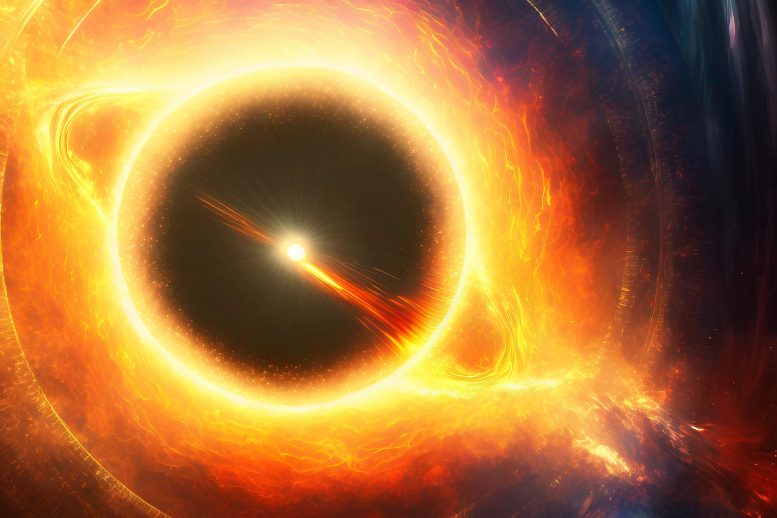
Black holes are regions in space where gravity is so strong that nothing, not even light, can escape their pull. They are formed from the remnants of massive stars that have collapsed in on themselves.
A new analysis has revealed the presence of “nonlinear” effects contained in gravitational waves.
When two black holes merge to form a larger black hole, they create violent disturbances in the fabric of spacetime, generating gravitational waves that propagate outwards. Previous research on black hole mergers relied on linear mathematics to model the behavior of these waves, assuming that they did not interact with each other. However, a recent analysis has delved deeper into these collisions, uncovering nonlinear effects in the behavior of gravitational waves.
“Nonlinear effects are what happens when waves on the beach crest and crash” says Keefe Mitman, a Caltech graduate student who works with Saul Teukolsky (PhD ’74), the Robinson Professor of Theoretical Astrophysics at Caltech with a joint appointment at Cornell University. “The waves interact and influence each other rather than ride along by themselves. With something as violent as a black hole merger, we expected these effects but had not seen them in our models until now. New methods for extracting the waveforms from our simulations have made it possible to see the nonlinearities.”
The research, published in the journal Physical Review Letters, come from a team of researchers at Caltech, Columbia University, University of Mississippi, Cornell University, and the Max Planck Institute for Gravitational Physics.
Caltech graduate student Keefe Mitman explains a new mathematical model of black hole collisions that contains nonlinear gravitational effects–a phenomenon he compares to what happens when two people jump wildly on a trampoline. Credit: Caltech
In the future, the new model can be used to learn more about the actual black hole collisions that have been routinely observed by LIGO (Laser Interferometer Gravitational-wave Observatory) ever since it made history in 2015 with the first direct detection of gravitational waves from space. LIGO will turn back on later this year after getting a set of upgrades that will make the detectors even more sensitive to gravitational waves than before.
Mitman and his colleagues are part of a team called the Simulating eXtreme Spacetimes collaboration, or SXS. Founded by Teukolsky in collaboration with Nobel Laureate Kip Thorne (BS ’62), Richard P. Feynman Professor of Theoretical Physics, Emeritus, at Caltech, the SXS project uses supercomputers to simulate black hole mergers. The supercomputers model how the black holes evolve as they spiral together and merge using the equations of Albert Einstein’s general theory of relativity. In fact, Teukolsky was the first to understand how to use these relativity equations to model the “ringdown” phase of the black hole collision, which occurs right after the two massive bodies have merged.
“Supercomputers are needed to carry out an accurate calculation of the entire signal: the inspiral of the two orbiting black holes, their merger, and the settling down to a single quiescent remnant black hole,” Teukolsky says. “The linear treatment of the settling down phase was the subject of my PhD thesis under Kip quite a while ago. The new nonlinear treatment of this phase will allow more accurate modeling of the waves and eventually new tests of whether general relativity is, in fact, the correct theory of gravity for black holes.”
The SXS simulations have proved instrumental in identifying and characterizing the nearly 100 black hole smashups detected by LIGO so far. This new study represents the first time that the team has identified nonlinear effects in simulations of the ringdown phase.
“Imagine there are two people on a trampoline,” Mitman says. “If they jump gently, they shouldn’t influence the other person that much. That’s what happens when we say a theory is linear. But if one person starts bouncing with more energy, then the trampoline will distort, and the other person will start to feel their influence. This is what we mean by nonlinear: the two people on the trampoline experience new oscillations because of the presence and influence of the other person.”
In gravitational terms, this means that the simulations produce new types of waves. “If you dig deeper under the large waves, you will find an additional new wave with a unique frequency,” Mitman says.
In the big picture, these new simulations will help researchers to better characterize future black hole collisions observed by LIGO and to better test Einstein’s general theory of relativity.
Says co-author Macarena Lagos of Columbia University, “This is a big step in preparing us for the next phase of gravitational-wave detection, which will deepen our understanding of gravity in these incredible phenomena taking place in the far reaches of the cosmos.”
Reference: “Nonlinearities in Black Hole Ringdowns” by Keefe Mitman, Macarena Lagos, Leo C. Stein, Sizheng Ma, Lam Hui, Yanbei Chen, Nils Deppe, François Hébert, Lawrence E. Kidder, Jordan Moxon, Mark A. Scheel, Saul A. Teukolsky, William Throwe and Nils L. Vu, 22 February 2023, Physical Review Letters.
DOI: 10.1103/PhysRevLett.130.081402
The study was funded by the Sherman Fairchild Foundation, National Science Foundation, the Innovative Theoretical Cosmology Fellowship of Columbia University, the Department of Energy, and the Simons Foundation.


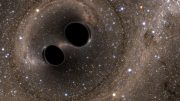
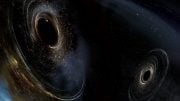


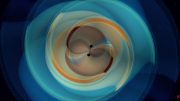
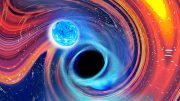

Black hole is not empty . Black hole is black fire actually. When fire brun many time it will trun in blak fire 🔥